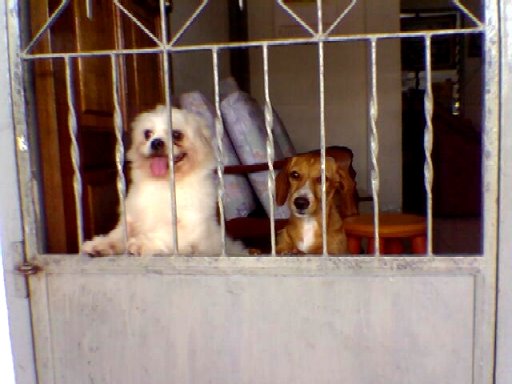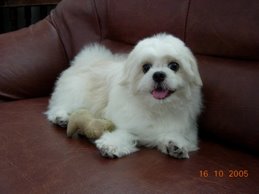The Value Of A Head Halter When Training Your Canine
Traditionally, owners have used a number of different collars when training their dogs. These include choke chains, Martingale collars, breakaways, and harnesses. Each has pros and cons, though many trainers are moving away from choke chains due to the strain they place on a canine's throat. One of the best collar-like training aids is a head halter. It gives you complete control over your pet's body by allowing you to direct his head. Plus, it can be used safely without inflicting discomfort.
Below, we'll explain how a head halter works, and describe the best way to help your dog become accustomed to wearing it. You'll also learn about a common mistake many inexperienced owners make when using this tool. Lastly, we'll take a look at a practical application.
Basics Of How A Head Halter Works
The design of this tool is such that it prevents any pressure from being applied to your canine's throat. Typically made of nylon, one strap goes behind his head and ears, and the other encircles his nose. Both straps are adjustable to maximize your pet's comfort while allowing you to maintain control. The leash attaches to the halter under your dog's chin.
This tool works in the same manner as a horse's halter. When you pull on the leash, it guides your canine's head to one side or the other. It does this without exerting pressure that causes discomfort or pain. Even if your pet resists the pull, he is unlikely to harm himself given the head halter's design.
For example, suppose you are walking your dog, and he charges ahead of you. A slight pull on the leash is enough to direct his head to the side. He will be unable to move further ahead unless you allow him. Note that your canine's momentum works against him. That is, because his head is turned, he can only move forward until he is no longer able to see in front of himself.
Acclimating Your Pet To His Halter
Most dogs find a head halter to be uncomfortable when they wear it for the first time. For this reason, plan to spend time acclimating your pet to it. He may initially try to take it off, or will mope while wearing it. It is important to help him associate his head halter with things he enjoys.
When you place it around his head for the first time, give him a few of his favorite treats and praise him. Avoid making him wear the tool for long periods in the beginning. Start with sessions that last five or six minutes, and gradually extend them. He will eventually become accustomed to wearing his head halter for longer periods.
Avoiding A Common Mistake
The appropriate way to correct undesired behavior (e.g. pulling, struggling, etc.) when using a head halter is to gently apply a small bit of upward pressure on the leash. Your canine's nose should be directed upward. Again, be gentle since quick, jerking movements can cause your dog discomfort. When he changes his behavior, immediately release the tension.
The mistake many owners make is to keep perpetual tension on the leash. The reason this happens is because owners are accustomed to holding their canines' leashes tightly. Doing so while the leash is attached to the head halter seems natural. Unfortunately, this prevents your dog from ever learning which of his behaviors are acceptable, and which are unacceptable.
The Head Halter In Practice
Stand with your canine at your side. Hold the leash in the hand nearest your pet, and allow enough room so he can venture ahead of you by approximately two feet. Do not allow him more slack. When you are ready to begin walking, tell him to "go."
Walk at an unchanging pace with the leash held firmly in your hand. Resist the temptation to change your pace in the event your dog tries to pull forward. Instead, allow his momentum to create tension on his head halter. This will slow him down since his head will be directed to one side.
Notice that the head halter places much of the onus upon your dog. If he pulls, he creates tension in the leash, which causes his head to be pulled to the side. He influences the entire process. While you will occasionally need to apply upward pressure on the leash in order to correct inappropriate behavior, your canine can do much of the work on his own.
Below, we'll explain how a head halter works, and describe the best way to help your dog become accustomed to wearing it. You'll also learn about a common mistake many inexperienced owners make when using this tool. Lastly, we'll take a look at a practical application.
Basics Of How A Head Halter Works
The design of this tool is such that it prevents any pressure from being applied to your canine's throat. Typically made of nylon, one strap goes behind his head and ears, and the other encircles his nose. Both straps are adjustable to maximize your pet's comfort while allowing you to maintain control. The leash attaches to the halter under your dog's chin.
This tool works in the same manner as a horse's halter. When you pull on the leash, it guides your canine's head to one side or the other. It does this without exerting pressure that causes discomfort or pain. Even if your pet resists the pull, he is unlikely to harm himself given the head halter's design.
For example, suppose you are walking your dog, and he charges ahead of you. A slight pull on the leash is enough to direct his head to the side. He will be unable to move further ahead unless you allow him. Note that your canine's momentum works against him. That is, because his head is turned, he can only move forward until he is no longer able to see in front of himself.
Acclimating Your Pet To His Halter
Most dogs find a head halter to be uncomfortable when they wear it for the first time. For this reason, plan to spend time acclimating your pet to it. He may initially try to take it off, or will mope while wearing it. It is important to help him associate his head halter with things he enjoys.
When you place it around his head for the first time, give him a few of his favorite treats and praise him. Avoid making him wear the tool for long periods in the beginning. Start with sessions that last five or six minutes, and gradually extend them. He will eventually become accustomed to wearing his head halter for longer periods.
Avoiding A Common Mistake
The appropriate way to correct undesired behavior (e.g. pulling, struggling, etc.) when using a head halter is to gently apply a small bit of upward pressure on the leash. Your canine's nose should be directed upward. Again, be gentle since quick, jerking movements can cause your dog discomfort. When he changes his behavior, immediately release the tension.
The mistake many owners make is to keep perpetual tension on the leash. The reason this happens is because owners are accustomed to holding their canines' leashes tightly. Doing so while the leash is attached to the head halter seems natural. Unfortunately, this prevents your dog from ever learning which of his behaviors are acceptable, and which are unacceptable.
The Head Halter In Practice
Stand with your canine at your side. Hold the leash in the hand nearest your pet, and allow enough room so he can venture ahead of you by approximately two feet. Do not allow him more slack. When you are ready to begin walking, tell him to "go."
Walk at an unchanging pace with the leash held firmly in your hand. Resist the temptation to change your pace in the event your dog tries to pull forward. Instead, allow his momentum to create tension on his head halter. This will slow him down since his head will be directed to one side.
Notice that the head halter places much of the onus upon your dog. If he pulls, he creates tension in the leash, which causes his head to be pulled to the side. He influences the entire process. While you will occasionally need to apply upward pressure on the leash in order to correct inappropriate behavior, your canine can do much of the work on his own.
About the Author:
>











0 comments:
Post a Comment